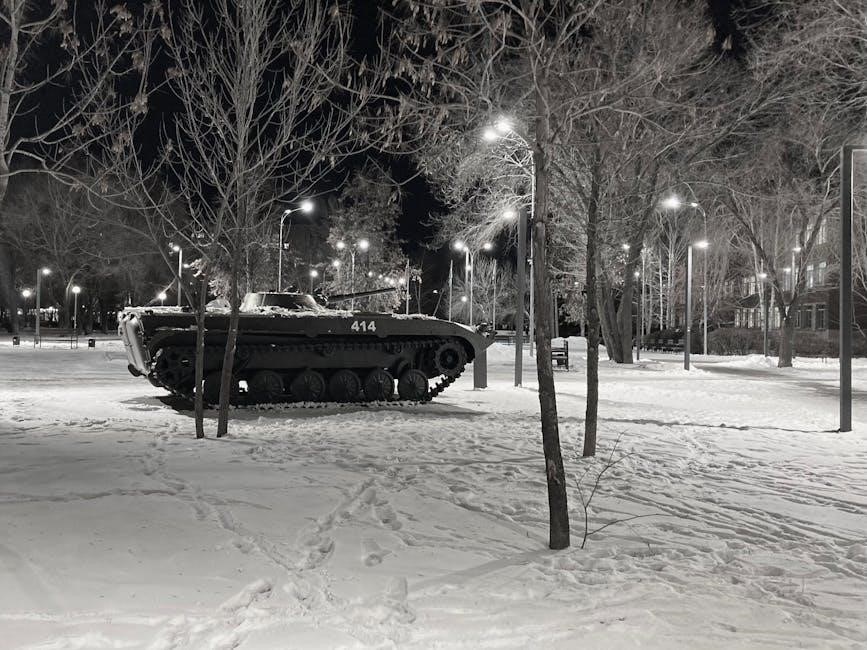and
- primary sources
to interpret cartoon meanings and artist intentions clearly and accurately always․
Overview of the Cold War Era
The Cold War era was a period of tension and competition between the United States and the Soviet Union, spanning from the end of World War II in 1945 to the collapse of the Soviet Union in 1991․ This era was marked by a series of events, including the formation of the United Nations, the Marshall Plan, and the Berlin Blockade․ The Cold War was fought on multiple fronts, including politics, economics, and culture, with each side seeking to expand its influence and undermine the other․ The era was also characterized by a series of proxy wars and conflicts, including the Korean War and the Vietnam War․ The Cold War had a profound impact on international relations, leading to the formation of new alliances and the emergence of new global powers․ The era was also marked by a series of significant events, including the Cuban Missile Crisis and the Soviet invasion of Afghanistan․ Overall, the Cold War era was a complex and multifaceted period in modern history․

Analysis of Cold War Cartoons
Cartoon analysis involves interpreting
- symbolism
and
- historical context
to understand artist intentions and meanings clearly and accurately always using online resources․
Cartoon 1: Path to Peace
The first cartoon, Path to Peace, depicts Joseph Stalin catching Greece and veering off the path to peace in Europe, symbolizing the tensions between the US and Soviet Union․
This cartoon is used in the Political Cartoon Analysis section to help students investigate the causes of domestic conflict in the early Cold War․
Students will read and analyze primary sources, timelines, maps, historical testimonies, and even political cartoons to build complex evidentiary claims․
The cartoon is available for free download as a PDF file and can be accessed through the provided links, allowing for easy use and customization․
The analysis of this cartoon involves interpreting the symbolism and historical context to understand the artist’s intentions and meanings, providing a deeper understanding of the Cold War era․
The cartoon is a valuable resource for teachers and students, offering a unique perspective on the historical events that shaped the world․
By analyzing this cartoon, students can gain a better understanding of the complexities of the Cold War and its impact on international relations․
The cartoon is a powerful tool for teaching and learning, and its analysis can be guided by the Cartoon Analysis Worksheet and Rubric․
Cartoon 2: Hunting Communists
The second cartoon, Hunting Communists, is another example of a Cold War-era cartoon that can be used to teach students about the historical context and tensions of the time․
This cartoon is also available for analysis, and students can complete the Cartoon Analysis Worksheet to guide their understanding of the artist’s message․
The worksheet helps students to identify the persuasive techniques used by the artist and to explain their effectiveness․
By analyzing this cartoon, students can gain a deeper understanding of the Red Scare and the fear of communism that characterized the Cold War era․
The cartoon can be accessed through the provided links, and additional information about the cartoon is also available․
The analysis of this cartoon involves interpreting the symbolism and historical context to understand the artist’s intentions and meanings․
Students can use the Cartoon Analysis Rubric to assess their own understanding of the cartoon and to evaluate their analysis․
The cartoon is a valuable resource for teaching and learning about the Cold War era․

Teaching Resources for Cold War Cartoons
Resources include
- worksheets
and
- rubrics
for analyzing cartoons and understanding historical context clearly always․
Cartoon Analysis Worksheet
The cartoon analysis worksheet is a valuable tool for students to analyze and understand the historical context of cold war cartoons․ This worksheet typically includes a series of questions and prompts that guide students in their analysis, such as identifying the main characters and events depicted in the cartoon, and analyzing the artist’s use of symbolism and persuasive techniques․ The worksheet may also ask students to consider the historical context in which the cartoon was created, including the political and social events of the time․ By using this worksheet, students can develop a deeper understanding of the cold war era and the ways in which political cartoons were used to shape public opinion and influence political discourse․ The worksheet can be used in conjunction with other teaching resources, such as rubrics and online resources, to provide a comprehensive learning experience for students․
Cartoon Analysis Rubric
A cartoon analysis rubric is used to assess student understanding of cold war cartoons, providing a clear and concise framework for evaluation․ The rubric typically includes criteria such as content knowledge, analysis, and critical thinking, with each criterion being assessed on a scale․ This allows teachers to provide detailed and constructive feedback to students, helping them to improve their analysis skills․ The rubric can be used in conjunction with a cartoon analysis worksheet, providing a comprehensive assessment of student learning․ By using a rubric, teachers can ensure that student assessments are fair, consistent, and aligned with learning objectives․ The rubric can also be used to identify areas where students may need additional support or instruction, allowing teachers to tailor their teaching to meet the needs of their students and provide targeted feedback to enhance student learning and understanding․ Effective use of the rubric enhances student evaluation․

Accessing Cold War Cartoons

Accessing cold war cartoons involves using online resources and digital archives to obtain cartoon images and analysis materials easily and quickly always․
Online Resources
Various online resources are available for analyzing cold war cartoons, including digital archives and websites that provide access to historical cartoon images and analysis materials․ These resources can be used to obtain cartoon images, analysis worksheets, and answer keys․ The internet provides a wide range of resources, such as websites and online libraries, that offer access to cold war cartoons and analysis materials․ Online resources can be used to support teaching and learning about the cold war era and the role of cartoons in shaping public opinion; Many online resources are available for free, while others may require subscription or registration․ Using online resources can be an effective way to analyze cold war cartoons and understand their historical context and significance; Online resources can also provide access to expert analysis and commentary on cold war cartoons, which can be useful for researchers and students․
